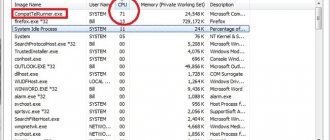Older video cards used the SDR , which had a single data transfer rate. Modern video cards use DDR or GDDR , data is transferred 2 or 4 times more data at the same frequency, so the operating frequency is multiplied by 2 or 4.
On sale you can find video cards with different types of video memory. For cheap low-end video cards, the GDDR2 and GDDR3 types are used. Such video cards are low-power and difficult to use for modern games.
What's the difference between GDDR5, GDDR5X and GDDR6
Graphics memory is an important characteristic of a video card and has a direct impact on gaming performance.
One of the most widely used memory types is still GDDR5, but it is gradually being replaced by the more advanced GDDR6.
GDDR5
GDDR5 was the fastest memory for video cards. AMD GTX 1060, GTX 1070 and RX 580 are good examples of graphics cards with GDDR5 memory on board. GDDR5 memory can deliver speeds of up to 9 Gbps, and the graphics cards came in 512 MB, 1 GB, 2 GB, 4 GB, and 8 GB capacities. GDDR5 chips are produced by different manufacturers such as Samsung, Hynix, ELPIDA or Micron.
GDDR5X
GDDR5 has a new extended version, GDDR5X. This memory is a new evolutionary step, delivering speeds of up to 14 Gbps and high bandwidth, making it an excellent choice for use in high-end graphics cards such as the GeForce GTX 1080 Ti.
GDDR6
GDDR6 memory is the latest in this standard. The voltage for GDDR6 memory is 1.3 Volts and can provide transfer speeds of up to 16 Gbps with a bandwidth of up to 72 Gbps per chip. It is produced by the same companies: Samsung, Micron and Hynix. Moreover, Samsung and Micron will provide speeds of up to 16 Gbit/s. Hynix will be occupied in the mid-range performance segment, where speeds are limited to 12-14 Gbps.
GDDR6 memory achieves performance levels similar to GDDR5X, but make no mistake, this is a completely new standard, its potential has not yet been reached and we will see much more powerful chips in the future. It is quite possible that we will reach 20 Gbit/s.
Comparison of performance and consumption between GDDR6 and GDDR5
The following table shows the most important characteristics of GDDR5 and GDDR6 memory:
| GDDR5/5X | GDDR6 | |
| Voltage | 1.5V | 1.3V |
| Manufacturer | Samsung, Micron, and Hynix | Samsung, Micron, and Hynix |
| Transmission speed | 8 Gbps GDDR514 Gbps GDDR5X | 16 Gbps |
| Format | FBGA190, 0.65 mm pitch, 14x10mm | FBGA180, 0.75 mm pitch, 14 × 12 mm |
| Configuration | X16/x32 | X8/x16 |
| Channels | 1 | 2 |
| Memory | 512 MB, 1 GB, 2 GB, 4 GB, and 8 GB | 8 GB and 16 GB |
HBM2 memory
HBM 2 is the second generation of HBM memory that has all the characteristics of HBM, but with higher speed and memory bandwidth. It can have up to 8 DRAMs per stack, with transfer rates up to 2 Gbps. With a 1024-bit wide memory interface, memory bandwidth is 256 GB/s per stack, twice that of HBM memory. The total capacity of HBM2 is also larger, and it can have up to 8GB per stack. The first GPU chip to use HBM2 memory is the Nvidia Tesla P100. Nvidia's latest Pascal series graphics card for workstations, the Nvidia Quadro GP100, also features HBM2 memory. HBM2 memory will be used mainly for VR games, AR games and other applications where fast work with video memory is needed.
GPU architectures supported by HBM2 include Vega, Pascal, and Nvidia's latest Volta GPU architecture. The successor to HBM2 is HBM3, which will be released in 2020. Top graphics cards using HBM2 memory: Nvidia Titan V, Radeon Vega Frontier Edition, Radeon RX Vega 56, Radeon Vega RX 64, Nvidia Quadro GP100.
GDDR5 decryption: what does it mean?
GDDR is an abbreviation for Graphics Double Data Rate. Decoding: graphical with double data transfer speed. Five means that this is already the fifth generation of DDR SDRAM video memory. This modification is designed specifically for applications that require higher operating frequencies.
Like its predecessor, the fourth generation, GDDR5 is designed based on DDR3 RAM with double communication channels (compared to DDR2). It differs from previous generations in its higher data exchange speed (up to 9 Gbit/s).
The difference with GDDR3 is significant: the speed there, like GDDR4, is much lower. The same applies to frequency: there are differences, and in all respects the GDDR5 is better than its predecessors.
Contrary to the stereotype that some users have, promoting such a standard is not a marketing ploy with the goal of selling something unknown, but at a higher price. Today, the same GDDR3 is used only in budget graphics chips, like the fourth generation. Powerful video cards that must run modern games have long been using GDDR5 or even something better.
Interesting fact: the first graphics adapter with such video memory was released back in 2008. It was an ATI Radeon HD 4870 - a very good video card at that time. 12 years have passed, but HDDR5 is still used, since the alternative is not too expensive to make video cards based on it available to a wide audience.
History of the development of memory standards
DDR2 memory was used in the NVIDIA GeForce FX 5800 Ultra video card. Although the memory was somewhere between DDR and DDR2.
GDDR3 memory was designed specifically for video cards; it had the same characteristics as DDR2, but with reduced consumption and heat dissipation, this made it possible to design boards with higher operating frequencies. This means that productivity has increased and the cooling system has been simplified.
DDR3 first installed on the modified NVIDIA GeForce FX 5700 Ultra, and then on the GeForce 6800 Ultra. Although the standard was developed by ATI engineers together with JEDEC, it was first used by nVidia. ATI itself began using this type of memory in the Radeon X800 series. GDDR3 was also used in the PlayStation 3 and Xbox 360 game consoles
GDDR4 was almost 2 times faster than the previous GDDR3. Technically, it was not very different from GDDR3. The main features were that GDDR4 had increased operating frequencies and reduced power consumption - about three times less than GDDR3.
ATI RADEON X1950 XTX became the first video card to have GDDR4 chips installed. The memory was not particularly popular; it was discontinued and replaced by GDDR5.
GDDR5 is the fastest type of video memory used in high-end video cards, operating at quadruple frequency up to 5 GHz (though theoretically up to 7 GHz). This made it possible to increase throughput to 120 GB/s when using a 256-bit interface. For example: to increase the bandwidth of GDDR3 or GDDR4 memory, it was necessary to use a 512-bit wide bus. With GDDR5, performance is doubled, with a smaller chip size and less power consumption.
Development of video card memory
| GDDR | GDDR2 | GDDR3 | GDDR4 | GDDR5 | ||||
| Nvidia | ATI | |||||||
| Year of mass release | 2001 | 2003 | 2004 | 2006 | 2006 | 2008 | ||
| Max. Frequency | 200 MHz | 500 MHz | 900 MHz | 1.2 GHz | 1.4 GHz | 5 GHz | ||
| Configuration | 4 Mx32 | 4 Mx32 | 8 Mx32 | 8 Mx32 | 16Mx32 | 32Mx32 | ||
| Buffer width | 2n | 4n | 4n | 4n | 8n | 8n | ||
| Voltage | 2.5V | 2.5V | 1.8V | 1.8V | 1.8V | 1.5V | ||
Review and testing of the Palit GeForce RTX 3080 GamingPro OC video card
Table of contents
- Introduction
- Packaging and equipment
- Design and features of the video card
- Test configuration
- Testing
- Conclusion
Introduction
Video cards based on the NVIDIA GA102 graphics processor have already begun to appear in retail.
Moreover, from different manufacturers and immediately non-reference designs. They have more classic shapes and outlines than the presented reference design model. The same applies to power connectors. They are the most common 8-pin PCI-e and no additional adapters are needed. It is already clear that the new products are not only productive, but can also consume more than 300 W. Therefore, large cooling systems no longer raise questions. And the new GPU itself is not small, although it is made using an 8 nm process technology. The Palit company is famous for its affordable prices for its products, and many are waiting for its models to purchase the new GeForce RTX 3080. Traditionally, prices will first be high and then gradually decrease when the market becomes full and demand falls. And there's still no word on the shortage - has NVIDIA made enough GPUs to support demand?
We are testing the Palit GeForce RTX 3080 GamingPro OC video card. The GamingPro series includes some of the company's lowest-priced and highest-demand models. The new generation has an updated design, with RGB lighting, which has already become synonymous with gaming solutions, and a three-fan cooler.
The TDP level declared by NVIDIA is 320 W, so many video cards will have massive cooling systems, otherwise it will not be so easy to cool it. Let's see how the Palit version copes with this, and also find out what features it has.
Let me remind you that we talked about the new technologies used in NVIDIA Ampere and the differences between the new products and the Turing generation in the corresponding material.
Packaging and equipment
announcements and advertising
2080 Super Gigabyte Gaming OC for 60 rubles.
Compeo.ru - the right comp store without any tricks
RTX 2060 becomes cheaper before the arrival of 3xxx
Ryzen 4000
series included in computers already in Citylink
The price of MSI RTX 2070 has collapsed after the announcement of RTX 3xxx
Core i9 10 series is half the price of the same 9 series
The price of memory has been halved in Regard - it’s more expensive everywhere
Before us is a medium-sized box. The outside is a beautiful colored shell, and the inside is a cardboard box. On the front you can see a fragment of the cooling system and an image of space. In the lower right corner there is a green insert with the name of the graphics accelerator.
The background of the packaging is predominantly black. On the back there is a description of the product, but there is not much useful information here.
Hidden inside is a black cardboard box. Inside, on top there is a thin book with a user manual, and under it is a sheet of polyethylene foam.
Underneath there is a frame made of the same material, where the video card is clamped in an antistatic bag. There are two more compartments at the top and bottom where the rest of the kit is located.
The kit is small: a mounting amplifier, a 2 x 6-pin to 8-pin PCI-e power adapter and a user manual.
There are no drivers, but everyone is already used to it.
Design and features of the video card
Oddly enough, the video card is not very large, but rather thicker. It takes up more than two slots in thickness. Its dimensions are 294 x 127 x 55 mm, weight - 1190g. The holder may not be superfluous.
At the back, the video card is covered with a metal plate. It serves not only for protection, but also for heat dissipation, as well as for connecting purposes.
The point is that the printed circuit board itself is significantly shorter than the cooling system and therefore the plate, as it were, extends it.
The plate is made of aluminum alloy and painted brown. It is not attached to the printed circuit board itself, but to a metal frame at the front with screws through the printed circuit board. On the back there are stickers with a barcode, the inscription GamingPro and GeForce RTX. There are also two protective stickers on the screws. And inside you can see four thermal rubber bands at the points of contact between the plate and the printed circuit board.
In order to remove the cooler, you first need to remove this plate and also unscrew the two screws on the video output side.
From the reverse side you can see that the radiator is based on a special frame. It is to this that the back plate is attached, and it itself is attached to the back bar. Overall the design is very durable.
The cooling system is made according to the classical design. Heat pipes diverge from a nickel-plated copper base, pierce two arrays of fins, resulting in two sections of the radiator.
Three PWM-controlled fans blow through them from above. Impeller diameter 80 mm. The motors are simply written: TAIHUI TH8015B2H-PCC01 with technical specifications 12 V, 0.45 A.
The fans are mounted on a plastic casing, and it is attached to the frame.
The printed circuit board itself is very compact with a dense arrangement of elements. I don’t know if there is any point in such savings, but everything is very cramped.
The GPU power supply is again divided into two parts.
Ten phases are to the right and six to the left of the GPU. The subsystem resembles an already familiar picture seen on other devices.
Each phase has one transistor assembly and an inductor. They could not be identified.
One ON Semiconductor NCP81611 PWM controller is soldered at the front, and two NCP81610 at the rear.
In the center is the NVIDIA RTX 3080 GPU, aka GA102. The chip was manufactured in the 32nd week of 2020.
GDDR6X memory chips are soldered on all sides. There are 4 on the left and right, and 1 on the top and bottom. A 320-bit bus is used here. There is room for two more microcircuits. Theoretically, an advanced version may appear, where they will be soldered
Microcircuits manufactured by Micron are used.
Additional power is supplied to the video card through two 8-pin + 8-pin PCI-e connectors.
The rear panel houses the usual array of video outputs.
- Three Display Port;
- One HDMI.
Test configuration
Testing of the Palit GeForce RTX 3080 GamingPro 10 GB video card was carried out as part of the following configuration:
- Processor: Intel Core i9-10900K @ 5100 MHz;
- Cooler: Noctua NH-D15;
- Thermal interface: Noctua NT-H1;
- Motherboard: ASRock Z490 Taichi, BIOS version 1.70;
- Memory: 2 x 8 GB DDR4-4133, A-Data XPG Spectrix D80 (Samsung B-die);
- Video card: Palit GeForce RTX 3080 GamingPro OC 10 GB (1440 / 1740 / 1188 MHz (core/boost/memory));
- SSD storage: M.2 Samsung 970 Evo 250 GB;
- Power supply: Seasonic SS-1000XP, 1000 Watt.
All fans, including the one built into the power supply, were turned off during noise level testing. Testing of video cards was carried out with a factory thermal interface. The room temperature was 25°C and the noise was 27.6 dB.
Testing
With the installation of the Palit GeForce RTX 3080 GamingPro video card, everything goes without a hitch, so I immediately suggest watching a video where it works under the “donut”. The results are good.
During normal operation, the fan speed does not reach 100%, but only 46%, which corresponds to 1800 rpm, the noise recorded from a distance of 1 meter is 34.7 dB. Even in this mode, the noise level is comfortable - 39.2 dB. At the front of the casing there is a small insert with RGB lighting. It, as usual with Palit, can be controlled using the functional proprietary Thunder Master utility.
After everything is assembled and running, let's take a look at the test bench using the utilities.
Overclocking the first versions of the GeForce RTX 3080 turned out to be difficult, and we had too little time to fully understand it, so we will only test it in normal mode.
Since different video cards will take part in testing, you need to look at what models they are and what frequencies they have.
NVIDIA GeForce RTX 2080 Super:
NVIDIA GeForce RTX 2080 Ti:
NVIDIA GeForce RTX 3080:
And now the tests themselves of several games in three resolutions.
Grand Theft Auto V
Anti-aliasing MSAA x8, built-in FullHD Bigger is better 2K Bigger is better 4K Bigger is better
Far Cry 5
Graphics quality: maximum, built-in FullHD Bigger is better 2K Bigger is better 4K Bigger is better
Shadow of the Tomb Raider
Quality graphics: maximum, Ray Tracing ON, DLSS OFF built-in benchmark FullHD Bigger is better 2K Bigger is better 4K Bigger is better
Assassins Creed Odyssey
Graphics quality: highest, built-in benchmark FullHD Bigger is better 2K Bigger is better 4K Bigger is better
Metro Exodus
Preset FullHD benchmark More is better 2K More is better 4K More is better
3DMark
Time Spy, Marks More is better Fire Strike Extreme, Marks More is better
Let's look at the video card through a thermal imager. We will watch in the hottest mode: when warming up using FurMark. The hottest place is the plate that is in contact with the transistor assemblies.
It heats up above 80°C on an open stand. The back plate heats up to almost 65°C, the inner one – up to 74°C.
By tradition, I will give a graph of the temperature versus the speed of rotation of the fan impellers.
Conclusion
The Palit GeForce RTX 3080 GamingPro OC graphics card is definitely interesting, and we can only hope that the price will be pleasant. The printed circuit board with such a large graphics processor turned out to be very compact, although the cooling system did not limit its dimensions. And the power subsystem is no different from competing solutions, perhaps only in the element base.
Overclocking is not that great, but all modern video cards and processors now suffer from this. A large and complex GPU is also used, so you shouldn’t expect miracles, and NVIDIA still needs to organize sales of the GeForce RTX 3090, which uses a full-fledged GA102. Of course, the Palit version will find its buyer, since it has high performance and a top-end cooling system.
So, GeForce RTX 3080 models demonstrate next-level performance at the same recommended price. Now you can actually play a large number of games in 4K resolution. At the same time, you can’t complain about noise, temperature indicators and efficiency.
Andrey Ponkratov
aka
wildchaser
We express our gratitude to:
- Palit for providing the Palit GeForce RTX 3080 GamingPro OC video card for testing.











